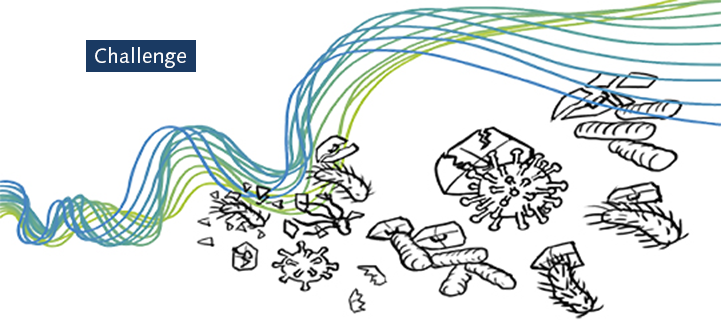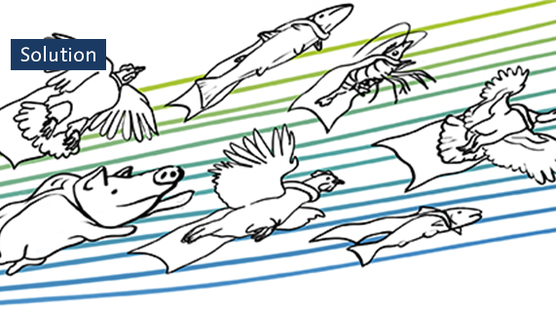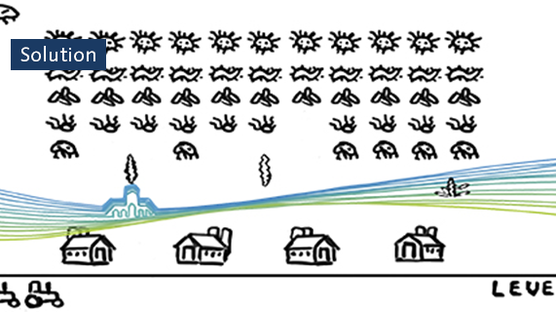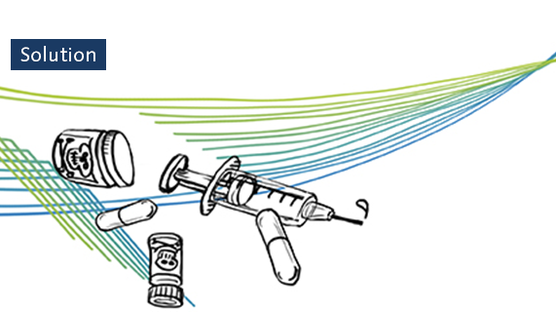
Published on May 1, 2021
The danger of antibiotic resistance
Antibiotic resistance affects everyone and is one of the biggest threats to global health and food security today. When bacteria adapt to their surrounding environment in order to survive, they can become resistant to the antibiotics we use. It doesn’t matter what age or country you are in, without the possibility to use effective antibiotics, common infections and minor injuries can trigger serious health hazards.
What is antibiotic resistance?
Pathogens (for example: bacteria, fungi, viruses, or other microorganism like parasites) can cause diseases. To battle diseases caused by bacteria in humans and animals, we use antibiotics. With effective antibiotics, bacteria are destroyed and recovery can begin. However, bacteria can also evolve. If some survive the antibiotic drug, within the right circumstances, they can multiply again. The surviving bacteria now have genetic information within their DNA to survive a following antibiotic attack.
When these bacteria pass on their DNA, the same information goes from one to another, making them resistant. With repeated and improper use of antibiotics, our society speeds up antimicrobial resistance. Surviving and resistant bacteria are left to grow and multiply without effective treatment available. Together, we can help slow that process.
Bacteria evolve too
Bacteria change all the time. It is their natural course in order to survive and multiply. Presently, a growing number of infections are becoming harder to treat as the medicine to treat them becomes less effective. Misuse or overuse of antibiotics in human and animal health is accelerating this process. This causes more sickness, higher costs and more deaths for people and animals alike.
Side note: Antibiotics work for bacteria and not for fungi, viruses, or other microorganism like parasites. There are parasites that become resistant against anti-parasite drugs too. This article’s focus is antibiotic resistance only. Interested in how to prevent disease outbreaks? Click here.
Antimicrobials fed to animals
Antimicrobials have been used in animal feed for over 70 years. They not only treat diseases, but also boost growth, improve feed utilization and reduce mortality. In other words, the use of these treatments creates an improvement in productivity. There is an increase of support to stop feeding antimicrobials to animals as it affects human health.
The use of growth promoters to boost animal growth has been banned in European Union countries since January 1, 2006. The challenge throughout the world is to reduce antimicrobial use while maintaining animal health, welfare and productivity.
Spread from animal to human
Diseases that spread from animals to humans or the other way around are called zoonosis. This is a big threat that can impact our entire planet. The COVID-19 pandemic is the most recent spread of such a disease. Zoonotic diseases can spread in many ways and very fast in our current society. Transmission can be contracted through:
- Working closely with infected animals.
- Being in contact with animals, such as pets, livestock or wildlife
- Having contact with contaminated objects, soil or water
- Consumption of contaminated food

Preventative measures to take
Prevention of disease is our first line of defense. Taking a sustainable approach means that economic, social and environmental aspects are intertwined. Battling antibiotic resistance is like fighting a multi-headed monster. There is no silver bullet. While misusing antibiotics speeds up antimicrobial resistance, prevention slows it down, as fewer people and animals will be impacted by a disease.
Practicing good personal hygiene, wearing protective clothing, maintaining animal health and undertaking preventative treatments and vaccinations when appropriate, minimizes the risk of diseases infecting people and animals. We as an animal breeding company can contribute with a balanced breeding approach. With each new generation, the animals are on average better than the generation before. This makes them more resilient and thus better equipped to withstand disruptions without needing antibiotics. Together with a biosecure environment, good husbandry and hygienic practices, lower mortality rates, and reduced animal stress, antibiotic free production becomes obtainable across the world. Nothing is solely 100% effective, but with each new generation to come, progression is a certain and is an effective tool.
Effectively addressing antibiotic resistance requires the entire world to collaborate. We must join forces and commit to implementing good practices to minimize the need of using antibiotics. Together we support the global food challenge, while we strive to set the standard for sustainable animal breeding.
You've read a challenge article. Interested in the solution or opportunity?
Do you want to explore all articles?



